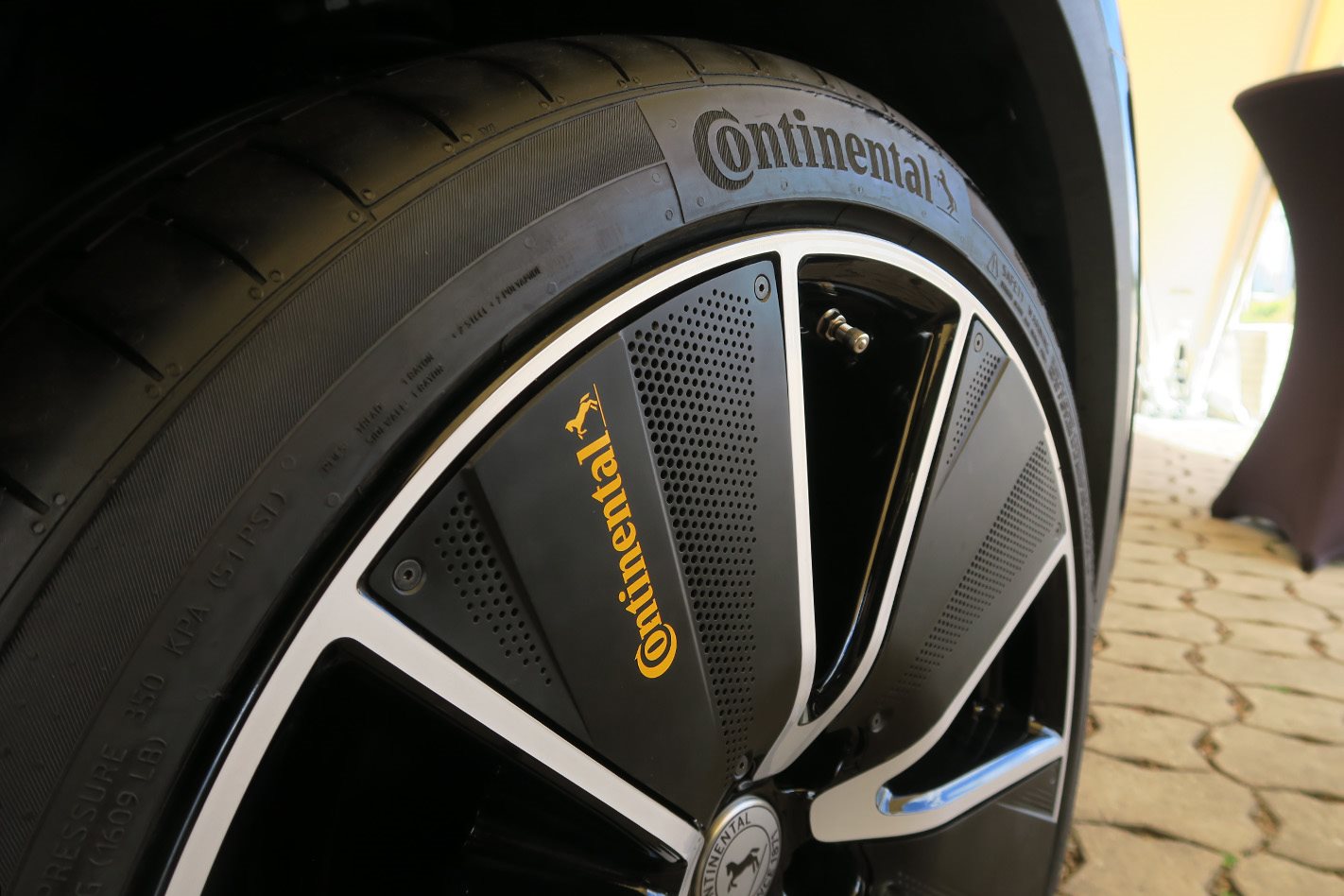
While cars have made rapid advances over the past half-century, we don’t tend to think of the tyres they roll on as following a similar journey of improvement. After all, since their invention by John Boyd Dunlop in 1887, the humble tyre has remained almost exclusively black, round, rubbery, and filled with air. And that’s not likely to change.
According to tyre manufacturer Continental, the car tyres of the future will still bear a strong visual resemblance to what we use today, but they’ll be festooned with sensors, able to morph their shape to suit the road, be more environmentally friendly and generate significantly less noise.
Continental wheeled out a host of future tyre concepts at its 2019 TechShow in Hanover, and though there’s no wild and out-there ideas among them, that’s kind of the point. It’s hard to improve on something that’s already so close to the ideal, but here’s how Continental sees the next evolution of tyres shaping up:
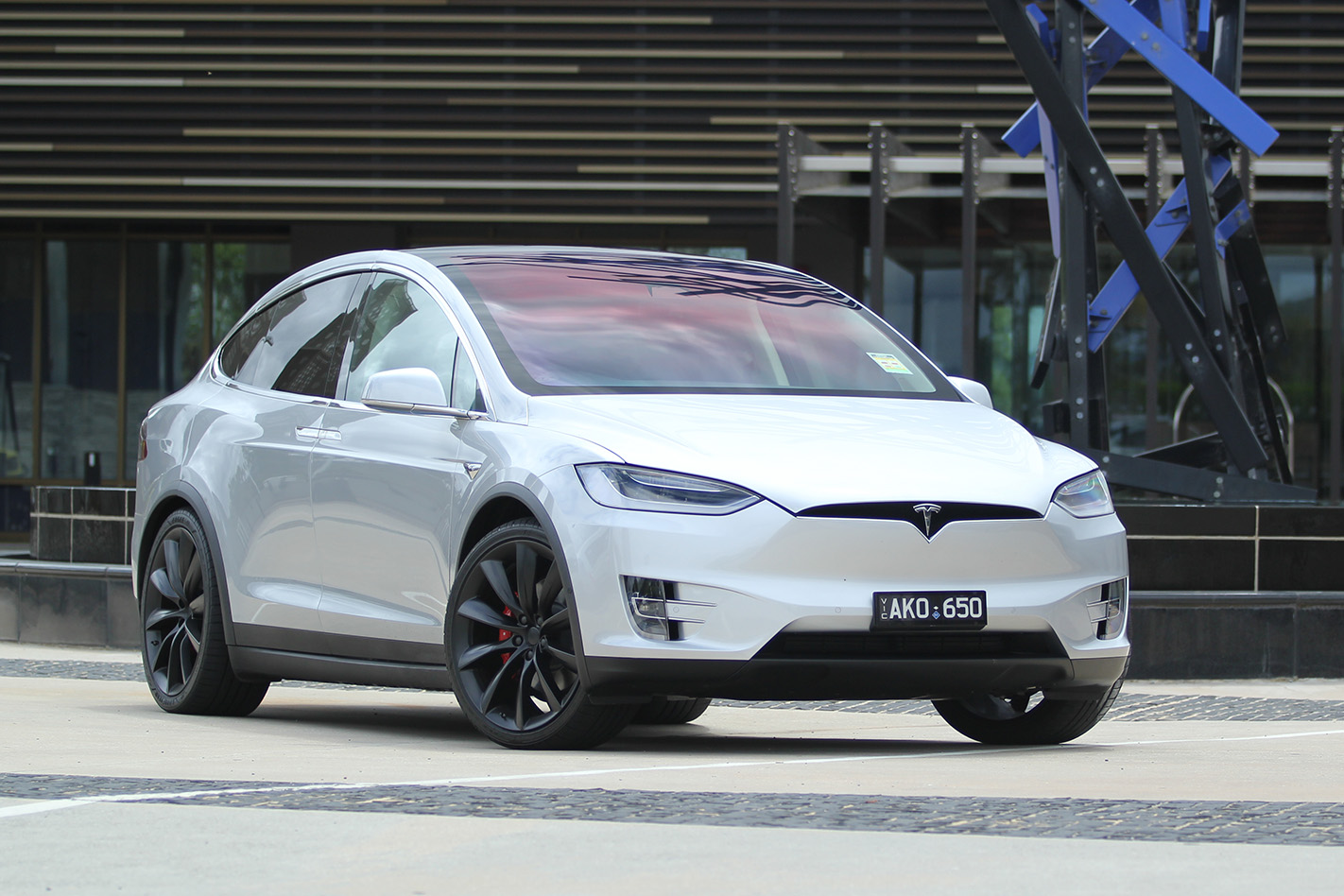
Fatter cars need beefier tyres
Electric vehicles (EVs) are fast becoming a fixture on roads around the world, and one of the main challenges of making tyres for EVs is dealing with their considerable weight. EV battery packs can be extremely heavy, making something the size of a small hatchback carry the weight of an SUV. Regular road tyres often don’t have the structural strength necessary to deal with that extra weight for a given size.
So Continental expects that tyres intended for EVs will be designed to be more robust than normal, with more reinforcing material to ensure handling and road-holding isn’t compromised by weight.
Naturally, non-electric cars will continue to use similar construction methods to what’s in use today, but with uptake of EVs forecast to increase significantly over the next decade, the notion of the “average car tyre” will soon become the one that’s fitted to a battery-electric vehicle.
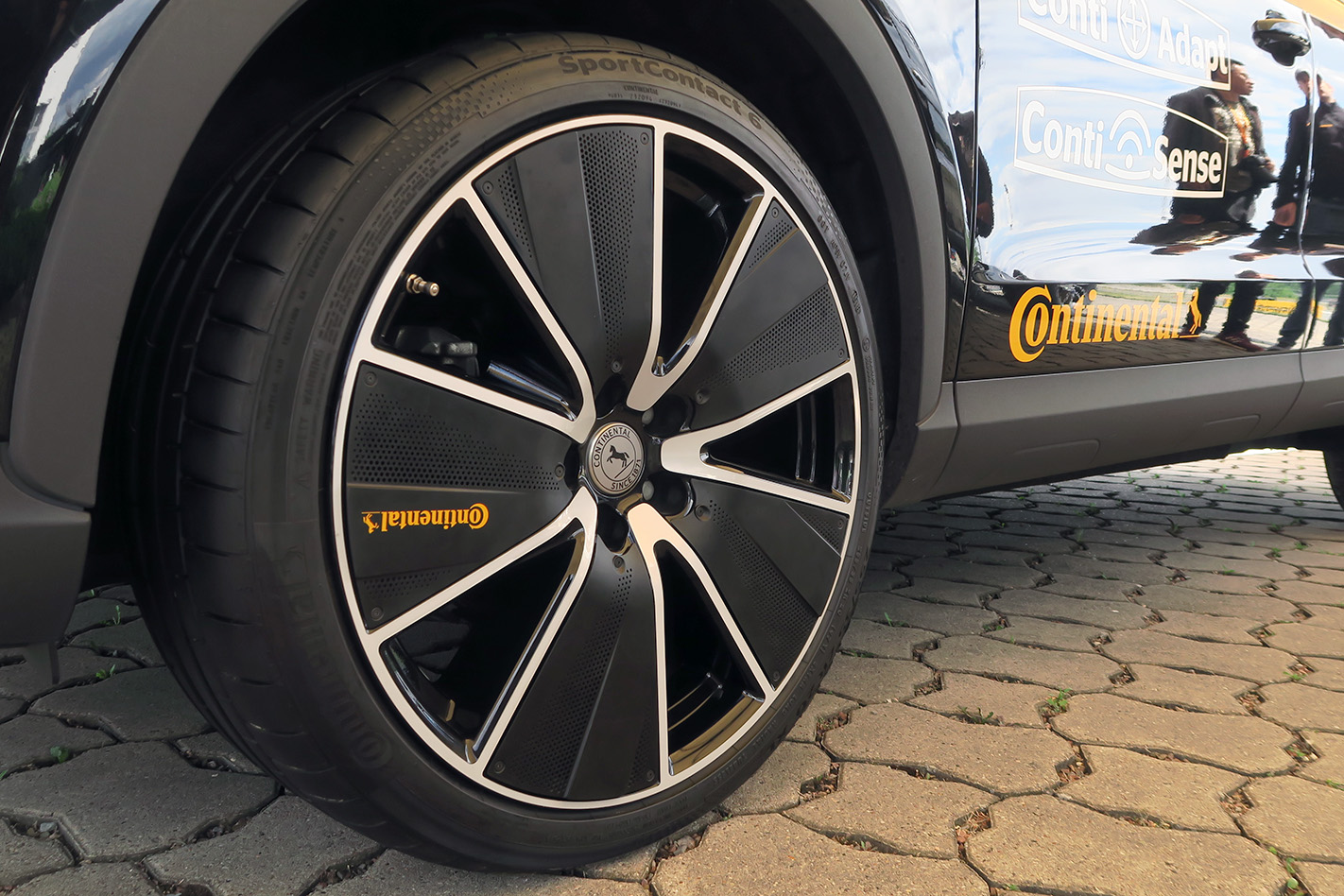
Shapeshifters
A tyre’s performance, comfort and efficiency is often tied to its physical shape. Tall-sidewalled tyres are typically riding better, low-profile tyres offer improved handling and narrow tyres burn less fuel, but those qualities are often in conflict with each other.
However, Continental says that shapeshifting wheels could allow future cars to blend those attributes into one tyre. The company showed off its DynamicPressure prototype at the 2019 TechShow, which houses a compact air compressor within the spokes of an alloy wheel, enabling it to pump-up or deflate a tyre without stopping.
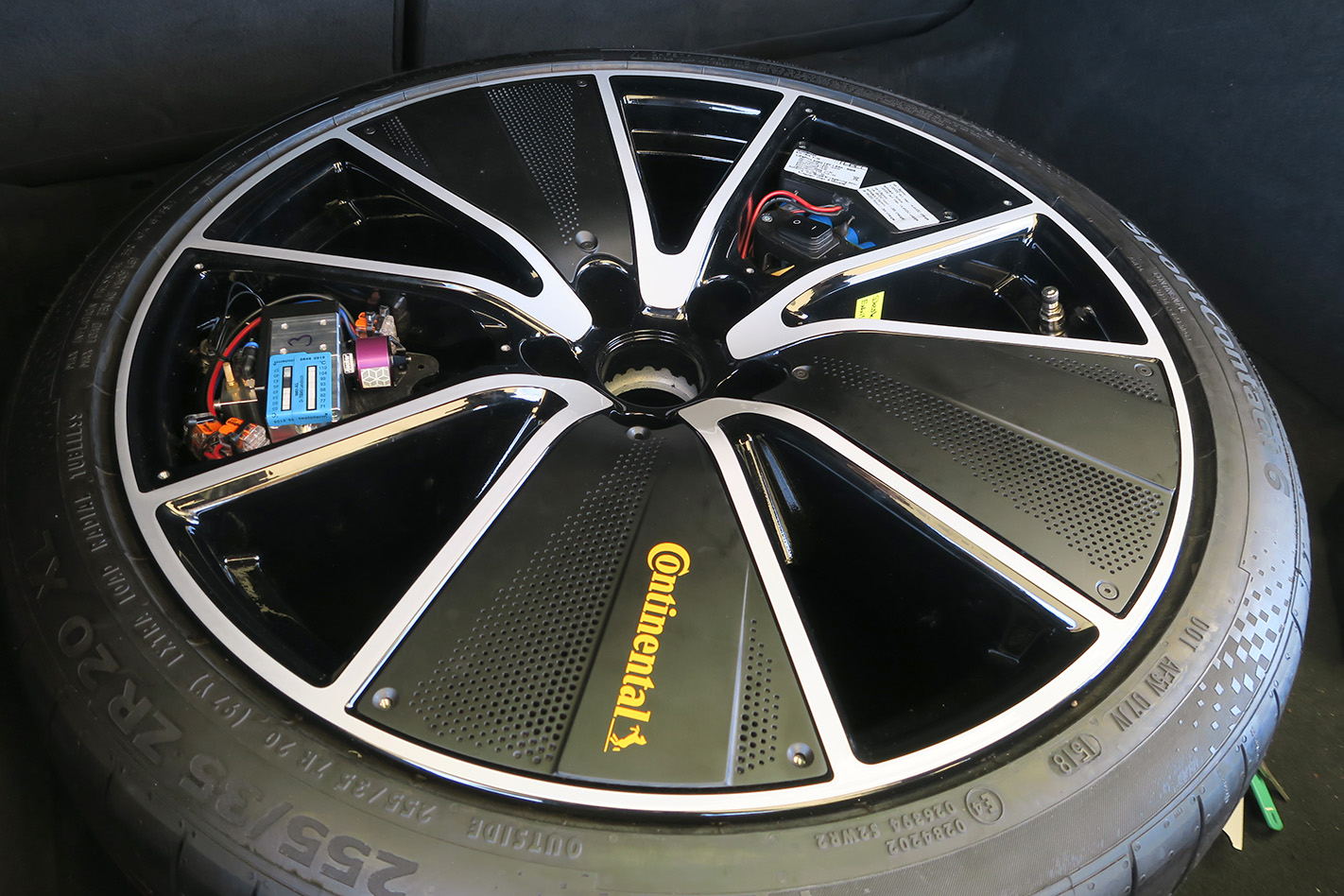
By increasing air pressure, rolling resistance is greatly reduced and fuel economy improves. By deflating it, comfort is boosted and the tyre contact patch grows, enhancing traction.
Similar systems are already fitted to military vehicles and mining trucks, but they’re not designed to operate at the same speeds as a road car. Continental’s challenge is to make the system compact, durable and affordable for regular motorists, however, it’s not expected to become a commonplace feature for at least the next half-decade.
Continental has also detailed a high-tech wheel capable of physically morphing its rim width from narrow to wide, allowing the car to switch from an economy mode to a high-performance mode on the fly, without requiring a tyre change. It’s an incredibly complex concept, however, and as such likely to remain a prototype only for the foreseeable future.
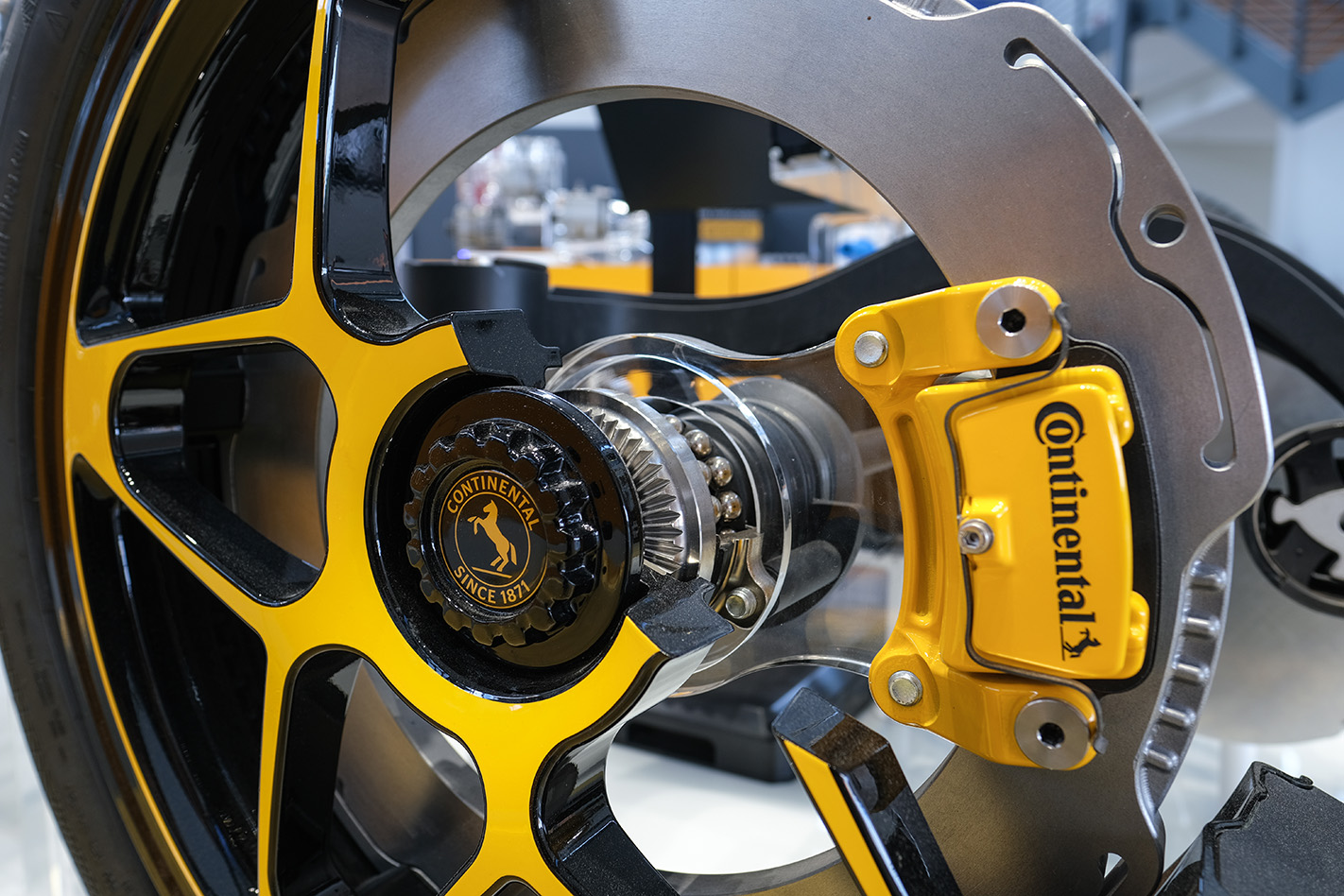
Smart tyres will talk to your car
Currently, the only electronic link between a tyre and the rest of the car extends to a tyre pressure monitor, which uses a sensor fixed to the inside of the wheel to measure the air pressure and inform the driver when a tyre may be running flat.
However, advances in sensor technology promise to make the tyre of the future a smart, self-diagnosing part of the car that won’t just tell you when there might be a puncture, but also when your tyre’s tread is getting low or when it’s overheated.
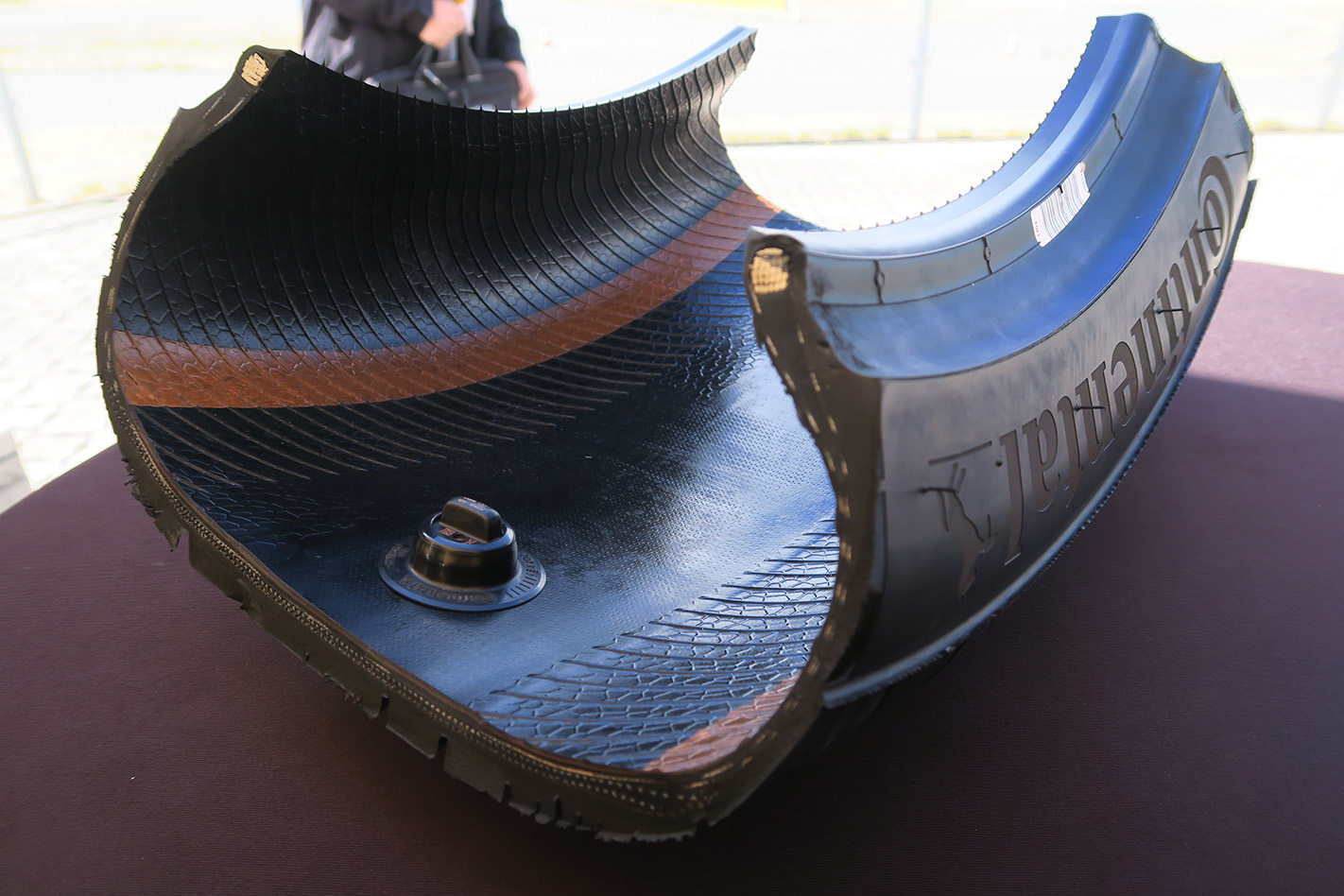
Using a sensor that weighs no more than 12 grams, Continental developed a system that bundles all of those functions into one unit, with tread depth monitored by conductive layers embedded in the tread face that close a circuit when they’re worn through.
Greener, in more ways than one
Besides improvements in rolling resistance (another change necessitated by the need to make cars more efficient), the tyre of the future will also be kinder on the environment through more eco-friendly materials.
Continental recently announced it will begin production of bicycle tyres made using natural rubber sourced from dandelions, and is examining whether that method can scale to production of tyres for road vehicles as well.

With rubber tree plantations taking up large amounts of land and often displacing rainforest, cultivating dandelions – which will grow pretty much anywhere – could be a more environmentally sensitive way of producing natural rubber for the tyre industry.
That said, synthetic rubber will still need to be a major ingredient of tyres, and unfortunately an alternative for the feedstock for that material – crude oil – has yet to be found.
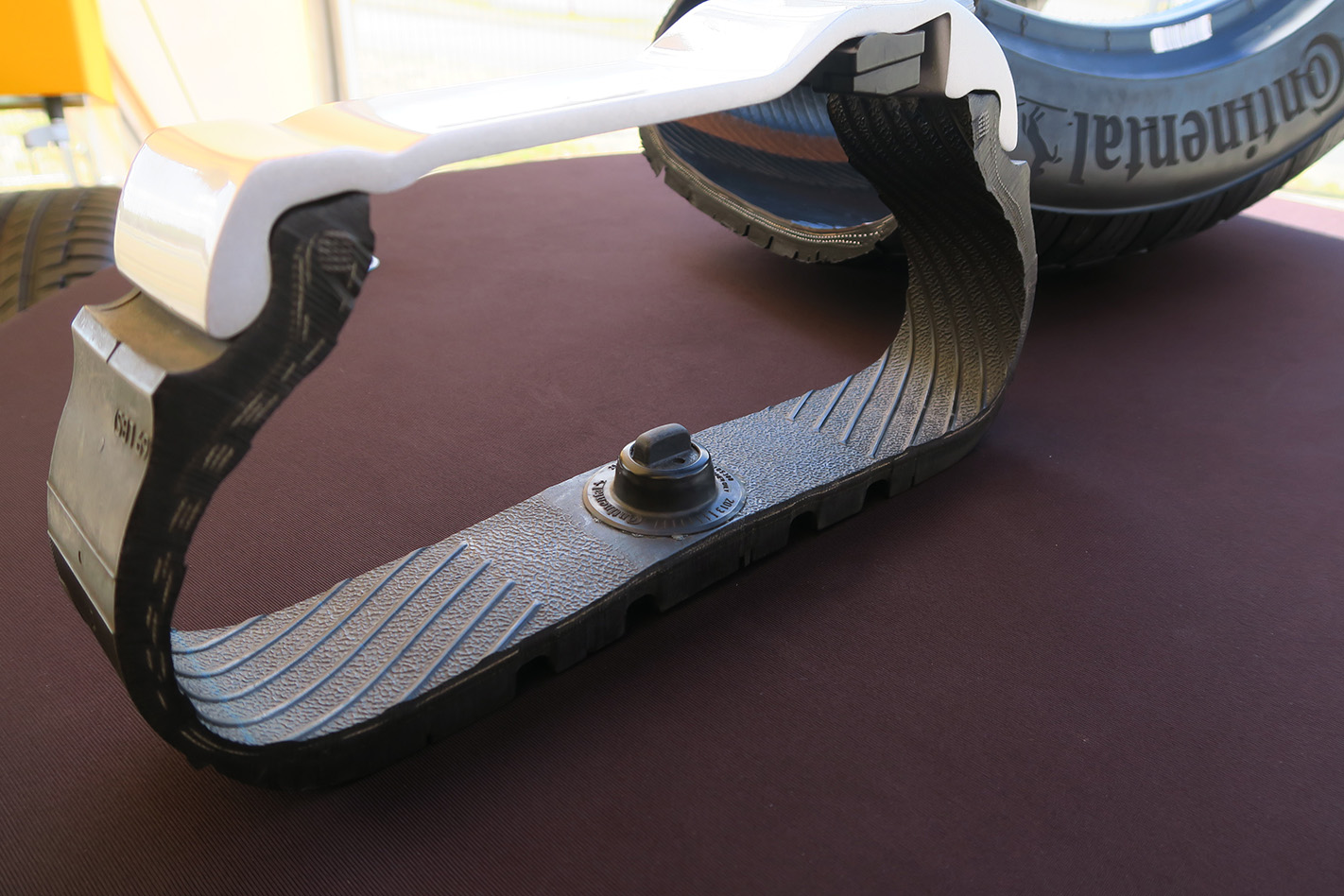
Stronger to resist electric twist
One of the trends identified by Continental’s tyre division is the greatly increasing torque loads of modern cars – the turning force generated by a car’s engine. Performance cars, in particular, are deploying significantly more torque than they used to (largely due to the widespread adoption of turbocharged engines), but electric cars are posing the biggest challenge.
An electric car, even something as pedestrian as a Nissan Leaf, produces its maximum torque figure at zero rpm, which can easily overwhelm a tyre’s grip capacity and puts more strain on the construction of tyres developed for lower torque outputs. Future tyres will accordingly be built to better apply that torque load to the road surface without breaking traction or degrading the tyre.
Quiet achiever
The steady rise of electric vehicles will also dictate another key change in tyres for the future – they’ll generate much less noise. Without a noisy combustion engine, the intrusiveness of tyre noise (that steady roar you hear from under the car at speed) becomes much more noticeable.
As such, future tyres will have compounds and tread patterns engineered to minimise the amount of noise they make. It won’t just benefit the driver and occupants either – anyone living next to a road will also notice less traffic-related sound as well.



